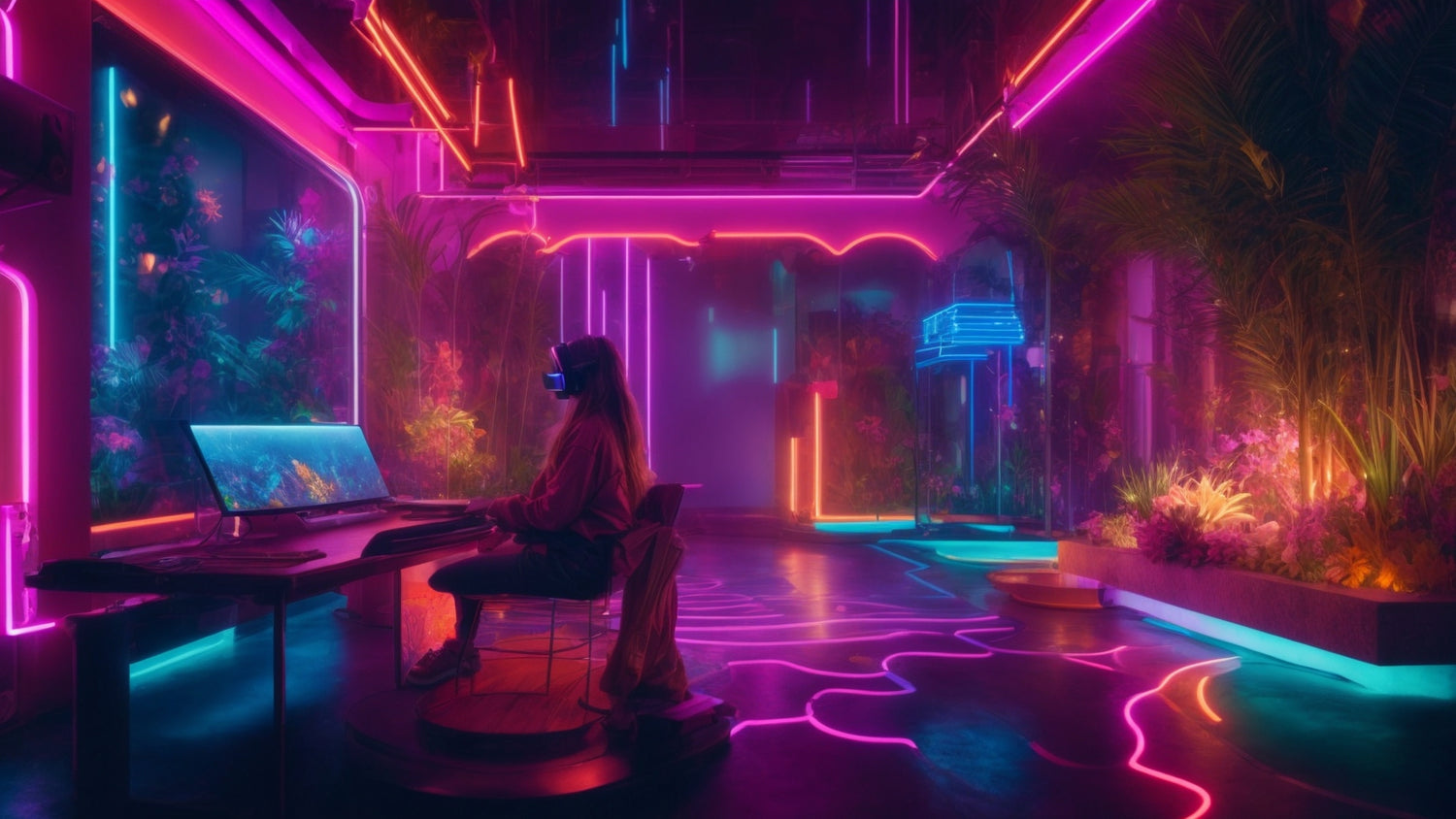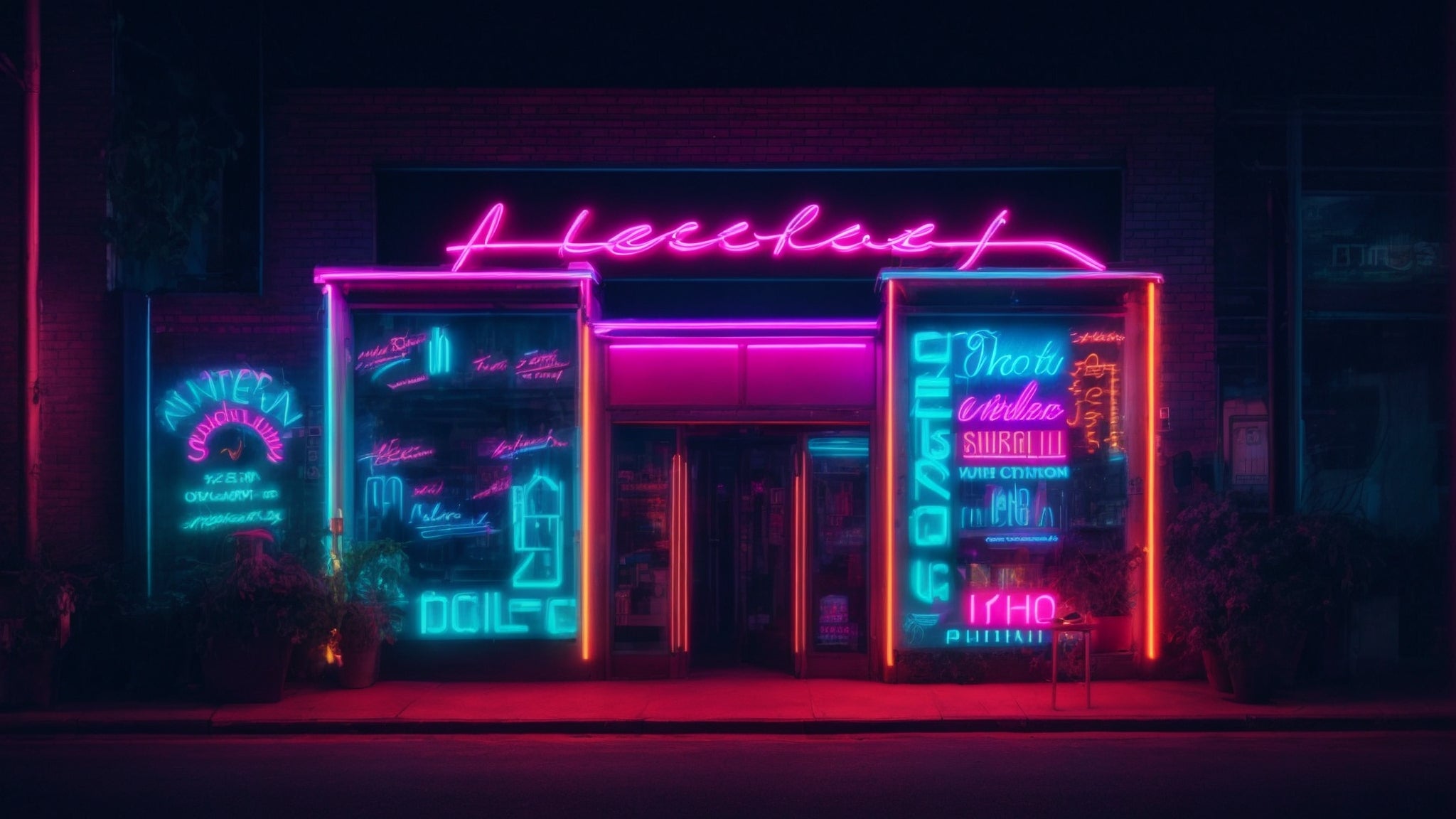Introduction
Virtual reality (VR) has transformed the way we experience digital content, transporting us to immersive and interactive worlds. Among the most captivating applications of VR is the creation of neon-lit scenes that captivate and engage viewers. In this article, we will delve into the art of crafting imaginative scenes that immerse viewers into neon-lit virtual reality environments.
Setting the Stage
The key to creating breathtaking neon-lit virtual reality environments lies in setting the stage. Whether it's a futuristic cityscape, an enchanting underwater world, or a retro-inspired cyberpunk realm, the scene should be visually stunning and evoke a sense of wonder. Consider the theme, ambiance, and narrative of the environment to create a cohesive and captivating experience.
Color Palette and Lighting
Neon-lit environments are known for their vibrant colors and striking contrasts. Selecting the right color palette is paramount to create a visually stunning experience. Bold and saturated colors work best, such as electric blues, glowing pinks, and vivid greens. Experiment with different color combinations to evoke different moods and emotions within the virtual environment.
Lighting plays a vital role in enhancing the neon-lit atmosphere. Experiment with lighting techniques like volumetric lighting, ray tracing, and global illumination to make the scene feel alive and dynamic. The interplay of light and shadows can create a mesmerizing and immersive experience for the viewer. Consider the placement of light sources and how they interact with the neon elements to create a visually striking and realistic environment.
Details and Interactivity
To make the virtual reality environment truly immersive, pay attention to the smallest details. Intricate neon signs, flickering lights, and interactive elements can add depth and engagement to the scene. Whether it's a bustling marketplace with animated holographic advertisements or a hidden easter egg that sparks curiosity, these details can bring the scene to life and make it feel more realistic and interactive for the viewer.
Additionally, consider incorporating dynamic elements such as moving objects, flowing water, or swaying vegetation. By adding these elements, you can create a sense of movement and life within the virtual environment, enhancing the overall immersion for the viewer.
Sound Design
A well-designed soundscape is essential to complement the visual experience and further immerse viewers into the neon-lit virtual reality environment. Audio cues, ambient sounds, and a carefully crafted soundtrack can transport viewers even deeper into the world you've created. Consider incorporating spatial audio techniques to enhance the sense of presence and directionality, allowing viewers to perceive sound as they would in the real world.
Experiment with futuristic sound effects, subtle background noises, and music that complements the atmosphere of the scene. The sound design should be carefully synchronized with the visual elements to create a cohesive and immersive experience for the viewer.
User Experience
While crafting imaginative scenes is crucial, it is equally important to prioritize user experience. A smooth and comfortable VR experience is essential to keep viewers engaged and prevent motion sickness. Optimize the scene's performance by paying attention to frame rates, reducing latency, and ensuring smooth transitions between different elements of the environment. Consider offering customization options to accommodate a wider range of users, such as adjustable movement speeds or comfort settings.
In addition to technical optimization, consider the physical space in which users will be experiencing the VR environment. Design the scene with clear boundaries to prevent users from accidentally bumping into objects in the real world. Provide visual cues or haptic feedback to guide users and ensure they feel safe and immersed in the virtual environment.
Collaboration and Iteration
The process of crafting imaginative scenes for VR environments often involves collaboration between artists, designers, and developers. Each team member brings their expertise to the table, resulting in a cohesive and immersive experience. Regular feedback and iterative testing with a target audience can help refine the scene and ensure it resonates with viewers.
Conclusion
Crafting imaginative scenes that immerse viewers into neon-lit virtual reality environments is an exciting and evolving field. By combining striking visuals, captivating sound design, and a seamless user experience, creators can transport viewers to mesmerizing worlds that captivate their imagination. Whether it's exploring futuristic cities, diving into fantastical realms, or embarking on surreal adventures, neon-lit virtual reality environments offer an exciting and immersive escape. As technology continues to advance, the possibilities for crafting imaginative scenes in virtual reality are only limited by our creativity and imagination.



Leave a comment
This site is protected by hCaptcha and the hCaptcha Privacy Policy and Terms of Service apply.